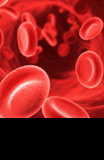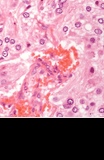This statement outlines how accessible our website is and what we are doing to fix any accessibility issues.
What this statement applies to
This accessibility statement applies to the Oxford University Hospitals (OUH) website, www.ouh.nhs.uk.
It does not apply to content on ouh.nhs.uk subdomains (for example, cpd.ouh.nhs.uk).
The information on the OUH website's job vacancies pages is populated via a feed from trac.jobs. Read the accessibility statement for trac.jobs
How you should be able to use this website
This website is run by Oxford University Hospitals NHS Foundation Trust. We want as many people as possible to be able to use this website. For example, that means you should be able to:
- change colours, contrast levels and fonts
- zoom in up to 400 percent without the text spilling off the screen
- navigate the website using just a keyboard
- listen to the website using a screen reader
We've also made the website text as simple as possible to understand.
AbilityNet: My Computer My Way has advice on making your device easier to use if you have a disability.
How accessible this website is
We know some parts of this website are not fully accessible. In particular:
- Documents - some documents have accessibility issues, such as being tagged incorrectly, insufficient colour contrast, or using images to present text. You can request this information in a different format using 'Feedback and contact information' (below).
- Image galleries - the thumbnail images have text alternatives but there is no alt attribute on the larger images that they link to. Please use the thumbnail images for this information.
When increasing text size, some elements on the page may overlap. This can be fixed by refreshing the page.
Feedback and contact information
If you need information on this website in a different format like accessible PDF, large print, Easy Read, audio recording or Braille:
Email: web.editor@ouh.nhs.uk
Tel: 01865 231471
We'll consider your request and get back to you in 20 days.
If you cannot view the maps on our hospital pages, call or email us for directions:
Email: web.editor@ouh.nhs.uk
Tel: 01865 231471
Reporting accessibility problems with this website
We're always looking to improve the accessibility of this website. If you find any problems not listed on this page or think we're not meeting accessibility requirements, contact:
OUH Web Communications Officer: web.editor@ouh.nhs.uk
Tel: 01865 231471
Enforcement procedure
The Equality and Human Rights Commission (EHRC) is responsible for enforcing the Public Sector Bodies (Websites and Mobile Applications) (No. 2) Accessibility Regulations 2018 (the 'accessibility regulations'). If you're not happy with how we respond to your complaint, contact the Equality Advisory and Support Service (EASS).
Technical information about this website's accessibility
Compliance status
This website is partially compliant with the Web Content Accessibility Guidelines version 2.2 AA standard, due to the non-compliances and exemptions listed below.
Non-accessible content
The content listed below is non-accessible for the following reasons.
Non-compliance with the accessibility regulations
Documents
There are documents published on the OUH website before 23 September 2018 that are not fully compliant with the accessibility regulations but are essential to the business of the Trust and patient care. There are also a smaller number of documents published more recently that have known accessibility issues.
Documents with accessibility issues include:
- Patient leaflets
- Meeting papers, including the Integrated Performance Report (IPR) and Financial Performance Report (FPR)
- OUH policies
- OUH Annual Reports and Accounts
- Referral forms / protocols
- Laboratory guidance / forms
Accessibility issues
Known document accessibility issues are listed below, alongside the Web Content Accessibility Guidelines (WCAG) criteria that they fail to meet.
Some documents only have one issue whereas others have multiple issues.
Title not set
Some documents do not have a title set that describe their topic or purpose. This may make it difficult for people to know which document they are reading. This fails WCAG 2.4.2 Page Titled.
Content not tagged or tagged incorrectly
Some documents do not have any tags. Others are tagged incorrectly (for example, headings are not specified or tables do not have headers). This means assistive technologies (such as screen readers) may not be able to interpret the content correctly. This fails WCAG 1.3.1 Info and Relationships, 1.3.2 Meaningful Sequence, 2.4.1 Bypass Blocks, and 4.1.2 Name, Role, Value.
Tab order does not reflect the document order
This may make it difficult to navigate the document with a keyboard. This fails WCAG 1.3.2 Meaningful Sequence and 2.4.3 Focus Order.
Images with missing or unsuitable text alternatives
This means people using assistive technologies may not have access to information conveyed in some images. This fails WCAG 1.1.1 Non-text Content.
Insufficient colour contrast
Some text and images do not meet minimum contrast requirements. This may make the content difficult to see for people with low vision, those who are colour blind, or those viewing the page in direct sunlight / low light levels. This fails WCAG 1.4.3 Contrast (Minimum) and / or WCAG 1.4.11 Non-text Contrast.
Language not set
This means screen readers may not be able to read content correctly. This fails WCAG 3.1.1 Language of Page.
Use of colour to convey meaning
Colour is occasionally used as the only way to convey meaning (for example, in infographics or colour-coded charts). This may make the content hard to interpret for people who are colour blind, have low vision or are viewing the page on a device with limited colours. This fails WCAG 1.4.1 Use of Color.
Images that contain text
Some images contain text when the text should have been presented in another way. This means assistive technologies may not be able to interpret the content correctly. This fails WCAG 1.4.5 Images of Text.
Links that do not make sense when their link text is read in isolation
This may make the content harder to understand for people using assistive technologies. This fails WCAG 2.4.4 Link Purpose (In Context).
Measures in place to fix the accessibility issues
Patient leaflets
Our patient leaflets are subject to a strict review process as many are used to gain consent from patients prior to treatment. We need to review them clinically when making any changes - we cannot update the version number or date of publication otherwise.
We have been reviewing our patient leaflets for accessibility and fixing any issues as they are clinically reviewed. To accelerate the review process, we have assigned extra resource in the form of clinical, administrative and graphic design staff.
To date, we have reviewed over 90% of our 1200+ patient leaflets.
We expect all leaflets to be reviewed and any accessibility issues fixed by January 2026.
Meeting papers and OUH policies
We are working to improve the accessibility of OUH policies and are in the process of creating an accessible template. We are also aware of accessibility issues with meeting agendas and are updating the template to fix this. The new templates should be in use by April 2026.
We are investigating ways to make future versions of our Integrated Performance Report and Financial Performance Report more accessible.
Accessibility issues in previous versions of our policies and meeting papers will not be fixed. These form part of the Trust's historical record and cannot be changed. However, archived documents are kept on the OUH website for a maximum of four years so documents with accessibility issues will be removed within that timeframe.
OUH Annual Report and Accounts
We are investigating ways to make future versions of our Annual Reports and Accounts accessible, but these are complex documents designed to meet statutory accounting standards and some parts must follow a set format (for example, the annual accounts use a template provided by the Department of Health and Social Care). Furthermore, some of the content is produced by third parties and is not supplied in an accessible format. We have already raised this with some of the third parties concerned and will continue discussions into how the accessibility of this content can be improved.
We have no plans to fix accessibility issues in previous versions of our Annual Reports and Accounts. These have been submitted to NHS England and the contents cannot be changed.
Other files / documents
A project is underway to remove all documents not essential to the function of the Trust and make all essential documents compliant with the accessibility regulations.
We aim to review all remaining documents and fix accessibility issues by June 2028.
If you need help to access a document that has been removed, please contact:
OUH Web Communications Officer: web.editor@ouh.nhs.uk
Tel: 01865 231471
Support for staff
We have provided detailed information and instructions for how to create accessible documents on our staff intranet and supplied an accessible template as a starting point. We support our staff on a case-by-case basis with recreating documents in an accessible format whenever they come up for review.
Content that's not within the scope of the accessibility regulations
PDFs and other documents
The accessibility regulations, regulation 4 2(a) do not require us to fix PDFs or other documents published before 23 September 2018 if they are not essential to providing our services. However, as noted above, a project is underway to remove any non-essential documents and ensure all remaining documents are accessible.
Video and audio files
The accessibility regulations, regulation 4 2(b) do not require us to fix pre-recorded time-based media published before 23 September 2020.
Maps
The accessibility regulations, regulation 4 2(d) has an exemption for online maps, as long as essential information is provided in an accessible digital manner.
Third party content
We embed third party content including:
- Care Quality Commission (CQC) widgets, which are used to display ratings and reports from CQC inspections
- Facebook feeds
- Social media buttons
- Web fonts
- Google Maps
- Videos from YouTube and Vimeo
We also use a third party image gallery. This has been configured to be as accessible as possible, but does not allow us to put alt attributes on the larger versions of the images that appear whenever you click on a thumbnail image. This fails WCAG 1.1.1 Non-text Content. A text alternative is available on the thumbnail images; please use this instead.
The accessibility regulations, regulation 4 2(e) has an exemption for third party content that is neither funded by us, nor developed by us, nor under our control.
Preparation of this accessibility statement
This statement was prepared on 22 September 2020. It was last reviewed on 13 October 2025.
This website is regularly tested in-house for accessibility. A combination of manual checks and automated testing tools is used. Content / functionality is tested when it is created or updated. We also use an accessibility monitoring and website governance tool, which carries out automated checks of the website every five days and reports on any issues found. An audit of a sample of pages was completed in September 2025 by the OUH Digital Web Team.




























































